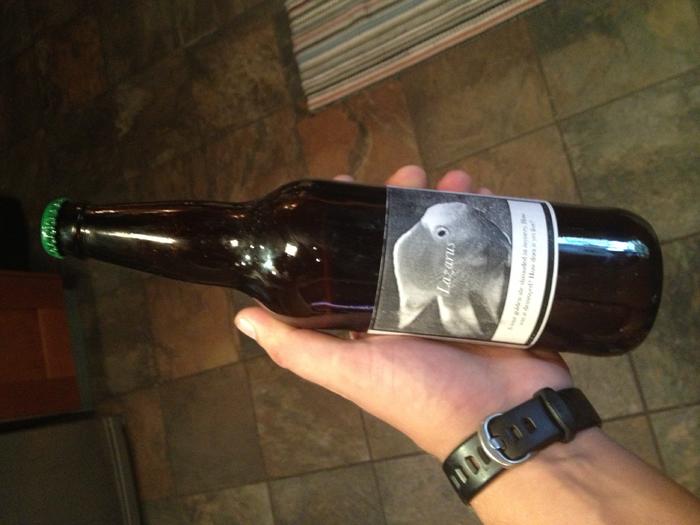killsurfcity
Well-Known Member
- Joined
- Feb 11, 2009
- Messages
- 170
- Reaction score
- 18
I've been brewing mostly sour beers for the past few years, with relative success, but recently I had a totally baffling issue. I figured maybe someone had come across this or heard of it, so here goes...
My brewing partner Matt and I have a 65g wine barrel, we've been using as a Solera for a Belgian Golden sour ale. We've only racked and replenished beer in it twice so it's fairly new. Our first batch out, was split and aged with a few kinds of berries, and it was great. The most recent batch as treated similarly. Broken into four carboys; straight, with grapes, with raspberries, dry hopped.
When last we checked on them, I noticed that a couple looked darker than I remember. I wrote it off as a trick of light or something, and paid it no mind. However, two days ago we we're set to bottle, and while racking we pulled a sample of the straight beer (yes, racked to secondary and nothing was added). It was clear then that something was wrong. The beer in the barrel is a beautiful clear golden color, but the beer in the carboy had turned a muddy purple-brown. And the taste... It's alright up front, but toward the end, It cuts into this odd, metalicy, papery, weirdness, that we can't figure out. We checked the other carboys and sure enough it'd taken 3 out of 4.
This is what is so baffling. All three carboys were treated exactly the same from what we know. Cleaned with Oxiclean, rinsed, and sanitized with Star-San. And yet, for some reason, the raspberry one is the only one that wasn't tainted in some way. We'd obviously really like to know what happened so we can avoid it in the future. As I'm sure you know, losing 20g of beer you've been sitting on over a year is no fun.
This isn't my image, but this is exactly what ours looked like. Ever heard of this?

My brewing partner Matt and I have a 65g wine barrel, we've been using as a Solera for a Belgian Golden sour ale. We've only racked and replenished beer in it twice so it's fairly new. Our first batch out, was split and aged with a few kinds of berries, and it was great. The most recent batch as treated similarly. Broken into four carboys; straight, with grapes, with raspberries, dry hopped.
When last we checked on them, I noticed that a couple looked darker than I remember. I wrote it off as a trick of light or something, and paid it no mind. However, two days ago we we're set to bottle, and while racking we pulled a sample of the straight beer (yes, racked to secondary and nothing was added). It was clear then that something was wrong. The beer in the barrel is a beautiful clear golden color, but the beer in the carboy had turned a muddy purple-brown. And the taste... It's alright up front, but toward the end, It cuts into this odd, metalicy, papery, weirdness, that we can't figure out. We checked the other carboys and sure enough it'd taken 3 out of 4.
This is what is so baffling. All three carboys were treated exactly the same from what we know. Cleaned with Oxiclean, rinsed, and sanitized with Star-San. And yet, for some reason, the raspberry one is the only one that wasn't tainted in some way. We'd obviously really like to know what happened so we can avoid it in the future. As I'm sure you know, losing 20g of beer you've been sitting on over a year is no fun.
This isn't my image, but this is exactly what ours looked like. Ever heard of this?




 A few days later I opened another beer and the first thing I noticed that was different was a darker color.
A few days later I opened another beer and the first thing I noticed that was different was a darker color. 
